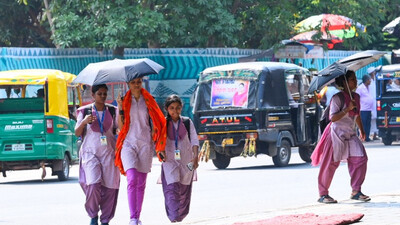Recommended Stories
According to the UNAIDS World Aids Day report 2011, the number of new HIV infections has been falling significantly in Asia, with India leading the pack. It said new HIV infections and AIDS-related deaths have fallen by 21 per cent from the peak of the epidemic around world.
The number of people dying of AIDS-related causes fell to 1.8 million in 2010, down from a peak of 2.2 million in the mid-2000s, while a total of 2.5 million deaths have been averted in low- and middle-income countries since 1995 due to antiretroviral therapy being introduced. "In South and South-East Asia, the estimated 270,000 new HIV infections in 2010 was 40 per cent less than at the epidemic`s peak in 1996," said the report.
"In India, the country with the largest number of people living with HIV in the region, new HIV infections fell by 56 per cent," it added. In 2002, India had about 2.73 million people living with HIV, which fell to 2.27 million in 2008. Releasing the report here, Executive Director of UNAIDS Michel Sidibe said the results are satisfactory, but stressed that shared responsibility is needed to combat the epidemic more effectively.
"Even in a very difficult financial crisis, countries are delivering results in the AIDS response. We have seen a massive scale up in access to HIV treatment which has had a dramatic effect on the lives of people everywhere," Sidibe said in a release. The report put the total number of people living with HIV in the world at present at around 34 million, a rise from 32.9 million a year ago.
According to the report, the number of new HIV infections in sub-Saharan Africa has dropped by more than 26 per cent from the height of the epidemic in 1997, led by a one third drop in South Africa, the country with the largest number of new HIV infections in the world. In the Caribbean, new HIV infections were reduced by a third from 2001 levels ? and by more than 25 per cent in Dominican Republic and Jamaica.
However, the number of new HIV infections continues to rise in Central Asia and Eastern Europe, Oceania and Middle-East, and North Africa, while it has remained stable in other regions of the world. "Declines in new HIV infections are also being spurred by changes in sexual behaviour, particularly in young people, as people reduce their numbers of sexual partners, increase condom use and are waiting longer before becoming sexually active," the report said.
"HIV prevalence declined among young people in at least 21 of 24 countries with national HIV prevalence of one per cent or higher. Five additional countries, Burkina Faso, Congo, Ghana, Nigeria, and Togo have seen HIV prevalence decline by more than 25 per cent between 2001 and 2010 in young people," it added.












